
|   |

|   |
Banaras revisited - Dr. Sunil Kothari e-mail: sunilkothari1933@gmail.com August 11, 2012 The renowned scientist Dr. Lalji Singh, Director of Centre for Cellular and Molecular Biology (CCMB), Hyderabad, has been appointed as the Vice Chancellor of Banaras Hindu University (BHU). Known for his studies in Cytogenetic and work on Evolution of Karyotypes in snakes and seminal work in molecular basis of sex determination, DNA finger printing, forensic investigation and for establishing Centre for DNA Technology, Fingerprinting and Diagnostics, Dr. Singh was a bright student of BHU and obtained Ph.D from there. Born in Jaunpur, UP, BHU is proud to have its own student as Vice Chancellor. I had known Dr. Lalji for many years as I was closely associated with CCMB, Hyderabad. Dr. Lalji used to attend my illustrated talks on dance at CCMB. It was Dr. PM Bhargav, scientist and former Director of CCMB, who had invited me to be a convener with him and Dr. Raja Ramanna, for a conference of scientists and artists at Hyderabad in 1986 during my tenure as Dean and Professor of School of Arts and Aesthetics, Jawaharlal Nehru University (JNU), Delhi. That historic conference has been a turning point in my life, as thanks to Dr. Bhargav, I was ushered into the world of science and scientists. 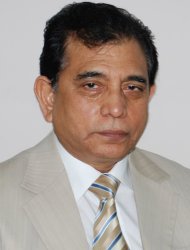 Dr. Lalji Singh Mr. Gandhi is a former Inspector General of Police and Director, Andhra Pradesh Forensic Scientific Lab at Hyderabad. He has established Truth Lab, India's first independent Forensic Science Lab in 2007. The sole objective of the Lab is to help the victims of crime and injustice by providing Scientific Investigation and Detective Services using modern forensic tools and techniques at affordable costs with international quality. It is an NGO and affiliated to Crime Stoppers Foundation India Global Network. During his formative period, Mr. Gandhi was much influenced by Mahatma Gandhi. Gandhiji had visited his village and his mother wished her son would follow the Mahatma's path and named him Gandhi, his full name being Purna Chandra Rao Gandhi. Mr. Gandhi was a brilliant student and studied abroad, but returned to India when NT Rama Rao, the Chief Minister of Andhra Pradesh, called him to work in India. He never looked back and had a brilliant career. During the last decade, he resolved many cases including Noida Nithari murder case, Tehelka Tapes, Godhra riots aftermath etc. Mr. Gandhi was closely associated with CCMB and was a close friend of Dr. PM Bhargav and Dr. Lalji Singh. Joining Academic Council, Dr. Gandhi explained how he would like to have interdisciplinary work with forensic studies, drug abuses and other related matters at BHU. During conversation with him, I learnt a lot about real crimes. Till then my familiarity with crime was through reading of detective novels of Agatha Christie and Raymond Chandler. I told him so. He was quite amused. Hearing about some real cases, I was fascinated and shocked to learn how criminals murder victims. I told Mr. Gandhi that he must write creative fiction which would be most interesting on account of the vast real experience he has. We travelled together as he was to go to Bangalore via Delhi and I to Ahmedabad. He shared with me his need to meet some ten people for a think tank who would support Truth Lab. I suggested Aamir Khan, the film actor, now much in news with his TV program of Satyameva Jayate, the dancer and cultural activist Mallika Sarabhai, Elaben Bhatt of SEWA, historian Ramchandra Guha and promised to put him in touch with them through email. Mr. Gandhi appeared a genuine, devout man, offering prayers at Vishvanath Temple. I was much impressed by him. 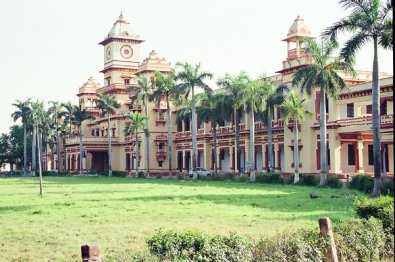 Electrical Engg Dept, BHU 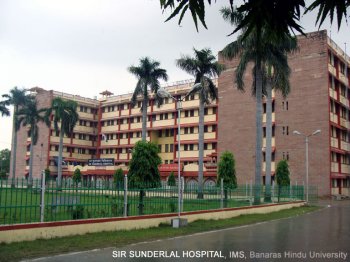 SS Hospital, BHU It was after 15 years that I was visiting Banaras again. Earlier, when I was Professor and Head, Dept of Dance, Rabindra Bharati University, I was invited to American Institute of Indian Studies (AIIS) for a residency of fifteen days to study the sculptures of medieval temples of North Gujarat. Dr. Madhusudan Dhaky is an architectural historian and author of several authoritative works including Encyclopedia of Indian Temple Architecture (with Michael Meister). He was Director Emeritus, of AIIS, and was held in great respect. I sought his guidance for my research work. He invited me to stay with him at his residence and arranged for transport to visit BHU whenever I wanted to go there. That fortnight was a memorable one, as Dr. Dhaky with his interest in several fields would regale us with value and beauty of jewels, effect of music on plants, in particular orchids. With his mastery over classical Hindustani and Carnatic music, he could establish insightful relationship between sculpture and dance. His knowledge of Sanskrit, Prakrit and Apabhransha languages is deep and sound. He is also a voracious reader. I was received by Mr. Krishnan, from Admission Section of BHU at the new, svelte airport named after Lal Bahadur Shastri, our former Prime Minister. Krishnan was born and brought up in Banaras, originally a Keralite, but now a pucca Banarasi, fond of classical Hindustani and Carnatic music. When he heard about my connection with JNU, he asked me if I knew Prof. CV Chandrasekhar, who had taught Bharatanatyam at Mahila College. In those years it was introduced as a hobby class. So we both clicked. Chandrasekhar joined as a Professor in the Dance Dept, MS University, Baroda in 1980 and I as a Professor in the Dance Department, Rabindra Bharati University, Kolkata. I had completed my Ph.D under the guidance of Anjali Merh, at MS University, Baroda. She was Chandrasekhar's classmate when he was studying Bharatanatyam at Kalakshetra. We had known each other for a long time. Dr. George Arundale, Rukmini Devi's husband, was at Banaras. He had laid a strong foundation for education and he and Rukmini Devi had a close association with BHU. She sent Chandrasekhar to Banaras to teach Bharatanatyam at Mahila College. Chandrasekhar is not only a dancer, but also a gifted vocalist with equal mastery in both the classical music traditions of Hindustani and Carnatic music. Music has always been in air in Banaras. Chandrasekhar had earned enviable reputation among the musicians in Banaras. Dr. Dhaky was also a great admirer of Chandrasekhar as was Chandrasekhar of Dr. Dhaky. Krishnan had worked under Dr. Dhaky at AIIS, before joining BHU, therefore all the way from the airport we caught up with all those days and remembered people we knew. Krishnan's love for music and dance indeed is admirable. Rarely would he miss Guru Kelucharan Mohapatra's performance at Sankat Mochan celebrations and continues to attend performances of guruji's son Ratikant and his wife Sujata Mohapatra, as well as Pandit Jasraj's vocal recital which starts after 2am in the morning and concludes at 5 or 6am! Ah, what ambience and what performances. However, Krishnan lamented that now Chaiti songs, Kajari songs are not being sung or celebrated as in early times. Western music has taken over, the adverse impact of Bollywood music and dance, he said, has caused this loss of interest in traditional songs and there are now few exponents specializing in Kajris, Chaitis and Thumris. I told him that Purab ang ki thumri is not lost. Recently in Kolkata and elsewhere, three-day sammelans were held focusing on thumris. The legendary Girija Devi had presided over those sammelans and honoured young generation exponents. No wonder when you land in Banaras, and meet someone like Krishnan, you feel lucky for the conversation. I was delighted that Krishnan was asked to look after the new members visiting Banaras from outstation. 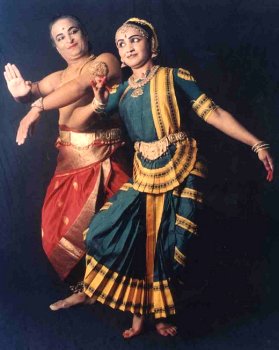 Prem Chand Hombal and Mala After I got settled, I got in touch with Kamala Dutt Tripathi, great Sanskrit scholar and a member of General Council of Sangeet Natak Akademi (SNA) looking after branch of Indira Gandhi National Centre for the Arts (IGNCA) at Banaras. Prem Chand Hombal came with his wife Mala to the LD Guest House to see me. Well known Bharatanatyam exponent Geeta Chandran from Delhi was member of Academic Council of BHU. I had spoken to her and wanted to know about the latest development at BHU for Performing Arts Faculty and also meet the Dean. I have known Dr. Ranjana Srivastav, a Kathak exponent, who was Head of the Dance Department. The position is by rotation. She was away at Gwalior for selection of dancers at the University. So, I missed meeting her. The last we had met was many years ago when Dr. Purnima Pande, Kathak exponent and Vice Chancellor of Khairagarh University, had invited some of us for a meeting. Kathak exponent and former Secretary of Sangeet Natak Akademi, Jayant Kastuar, Ranjana Srivastav and I had spent some time together discussing various issues of Kathak. Since BHU is a Central University, they have arrangements for inviting Visiting Professors for a series of lectures. I had expressed interest in visiting Dance Department for lectures, which Prem Chand Hombal said he shall work out now that I was a member of Academic Council and shall be visiting BHU often. Dr. Lalji Singh had invited other new members to visit Banaras well in advance for two to three days before the meeting so that we could interact with the faulty and also give lectures. It was raining, therefore Smt. Velankar, the Dean, could not come to see me. I wanted to know if any queries were raised or were to be raised during the Academic Council meeting next evening. Our Hon'ble Minister for Human Resources, HD Kapil Sibal has made it compulsory to have semester system for all disciplines of studies at the university level. That has increased the work load of the teachers who teach practical dancing and music. When advertised, the post of Professors for dance does not attract many applicants, because of the requirements of qualifications like Ph.D, certain number of research papers to have been published in research journals, certain number of marks in each examination, NET examination and what have you! I remember in 1985, University Grants Commission (UGC) had sent a team to examine the proposal to make Kalakshetra as a Deemed University. I was one of the members of that team. When I met Rukmini Devi, she categorically said that she did not want to turn Kalakshetra into a Deemed University even when the salaries of the teaching staff would be increased. From her experience of establishing an institution like Kalakshetra and enlisting support of legendary musicians, some of them advanced in age, she knew that University norms for Ph. D and other requirements would not fit into traditional training of performing arts, which she found best under Guru Shishya parampara. The age old wise, gifted gurus, musicians were storehouse of knowledge and even when old, what they were imparting was something very precious. They could not be subjected to the rules of retirement, obtaining Ph. D degrees, submitting research papers in journals and so on. At present in the universities where dance and music are taught at MA and Ph.D level, for the post of Readers and Professors the rules have been so framed, that traditional teachers are unable to meet them. With the result, if the lecturer has not acquired Ph. D, he cannot be promoted to the post of a reader and a professor. Also those who have received practical training in dance and have also cleared NET examination, but have not obtained Ph. D cannot be appointed to the post of a reader and a professor. An example of this conflict is seen at Hyderabad University in dance department, where Ramalinga Sastri is not being promoted as a Professor though his qualifications are above board. But he remains a reader on account of these rules. I think it is important that rules should be so framed which give enough space and scope for traditional teachers to get the posts of readers and professors. Today these posts have remained vacant in some universities. These issues have to be explained before Academic Council after they are discussed and approved by various committees and finally forwarded by Executive Committee to Academic Council. Prem Chand and other staff members of music faculty whom I met as well as of Musicology Department also brought this to my notice. In the first meeting since these issues were not formally forwarded by EC to AC, they could not be taken up. But Prem Chand Hombal said that he would prepare a draft, listing all difficulties and get it approved by EC for next year's meeting. I hope to take it up and see what best solution can be arrived at. The advantage of getting nominated to Academic Council at such a prestigious university is one can meet distinguished members of different disciplines. The three hour long Academic Council meeting brought to some of us who were new, what Dr. Lalji Singh had planned to establish and develop a new institution during the 150th birth anniversary of Mahamana Madan Mohan Malaviya, the visionary and founder of BHU. It is proposed to establish a Women's College at Rai Bareilly, which shall have well conceived courses that shall empower women with knowledge and which would be a tribute to Mahamana Madan Mohan Malaviya. After the meeting was over, some of us were taken to the Shiva temple in the university campus. It is very neat and clean and is well designed with large compound, whereas the main Vishvanath Temple in the city is crowded and not of an easy access, particularly because of Shravan month and Monday when hundreds of saffron clad sadhus carrying kavads, with water in (alas plastic ) pots come to temple to pour it on Shiva linga. Nowadays, there are great security measures taken and long queues are formed from early morning. Over dinner, it was suggested that some of us would be taken with police escort at 7am for darshan and visit to the temple. Mr. Gandhi, being a retired police DG, of course, we had great facility to enter the temple and have darshan of the Lord and offer flowers etc. One had to see the crowds to watch the deep faith which drives people to visit this holiest of the holy shrines. It had rained, so the roads were wet, there were green carpets leading to the temple from some short distance, but the path was slippery and one had to tread carefully. A member of police force was with us. Krishnan lent me a hand. A young acquaintance of Mr. Gandhi in charge of Andhra Samaj had accompanied us. After darshan we were to go to Andhra Samaj, crossing the legendary narrow lanes of Banaras, with cow dung all over, dirt, open sewers and uneven path, winding through so many turns. But the building of Andhra Samaj was neat and clean. There is also a temple and a tank. All facilities for lodging and boarding are available. The Telugu community, visiting from Andhra, is being looked after by this trust. I was told that similar associations are there for Gujaratis, Bengalis and other communities. It was indeed an experience to go through those narrow lanes and by lanes. I was reminded of film 'Aparajito' by Satyajit Ray. He has captured Banaras in its multiple variety and beauty. I remembered one scene when a group of monkeys clamber and run across bells hung in a temple. I saw monkeys at the temple when we were asked to look up at the flag at the shikhara of the temple. Next door is a masjid, and one sees these two religious institutions cheek by jowl, standing next to each other - a supreme example of religious tolerance. Great precaution is being taken to avoid any community riots and hurting feelings of the Hindus and the Muslims. 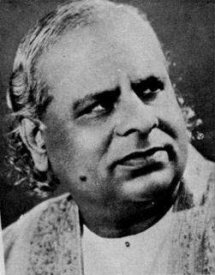 Pandit Omkarnath Thakur 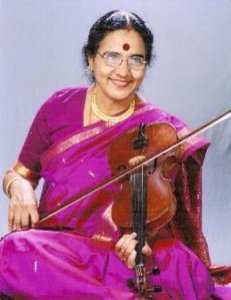 Dr. N Rajam I had visited Banaras in 1982 or thereabout when Rukmini Devi and Kamala Devi Chattopadhyay were given Honoris Causa doctorate degrees by BHU. In those years, Dr. Premlata Sharma, known as Behan-ji, the prime disciple of the great Hindustani vocalist Pandit Omkar Nath Thakur was at BHU. Dr. Ranganayaki Ayyangar, a Carnatic vocalist and a musicologist, with a degree in world music from Pennsylvania University also was with us. Anand Krishna known as Raja bhaiya and Thakur Jaidev Singh, the great musician, were around. The violinist Dr. N Rajam, disciple of Pandit Omkarnath Thakur, was a part of Banaras. Kisan Maharaj, Chhannulal Mishra, Girija Devi, Shehnai wizard Bismillah Khan, Sitara Devi, and the famous Kabir Chauraha - ah, when one recalls the glory of Banaras, one is overwhelmed by its amazing music and dance legacy. The great scholars Vasudev Sharan Agarwal, under whose guidance Dr. Kapila Vatsyayan completed her Ph. D, Dr. Motichandra, who later on became the curator of Bombay Museum, his son Dr. Pramod Chandra who is Professor at Howard University, Boston, the literary figures like Bharatendu Harish Chandra, novelist Prem Chand and Rai Krishna Das who established the institution of Bharat Kala Bhavan, built up with such care and vision, treasuring rare miniature paintings, remind us of Banaras as a seat of learning and culture. Later on at AIIS, Alice Bonner from Switzerland, who had assisted Uday Shankar in his career as a dancer, she herself being a sculptor, who in her later life worked on Shilpashastra texts with Pandit Sadashiva Rath Sharma, is all part of Banaras. And those fortunate people who have watched Ramleela of Banaras have always felt they have been privileged to witness it on such a grand scale! With all the complexities and contradictions, Banaras remains an enigma and invariably draws one to its eternal magic.  Dr. Sunil Kothari is a dance historian, scholar, author and a renowned dance critic. He is Vice President of World Dance Alliance Asia Pacific India chapter, based in New Delhi. He is honored by the President of India with Padma Shri, Sangeet Natak Akademi award and Senior Critic Award from Dance Critics Association, NYC. He is a regular contributor to www.narthaki.com, the roving critic for monthly magazine Sruti and is a contributing editor of Nartanam for the past 11 years. Post your comments Pl provide your name and email id along with your comment. All appropriate comments posted with name and email id in the blog will also be featured in the site. |